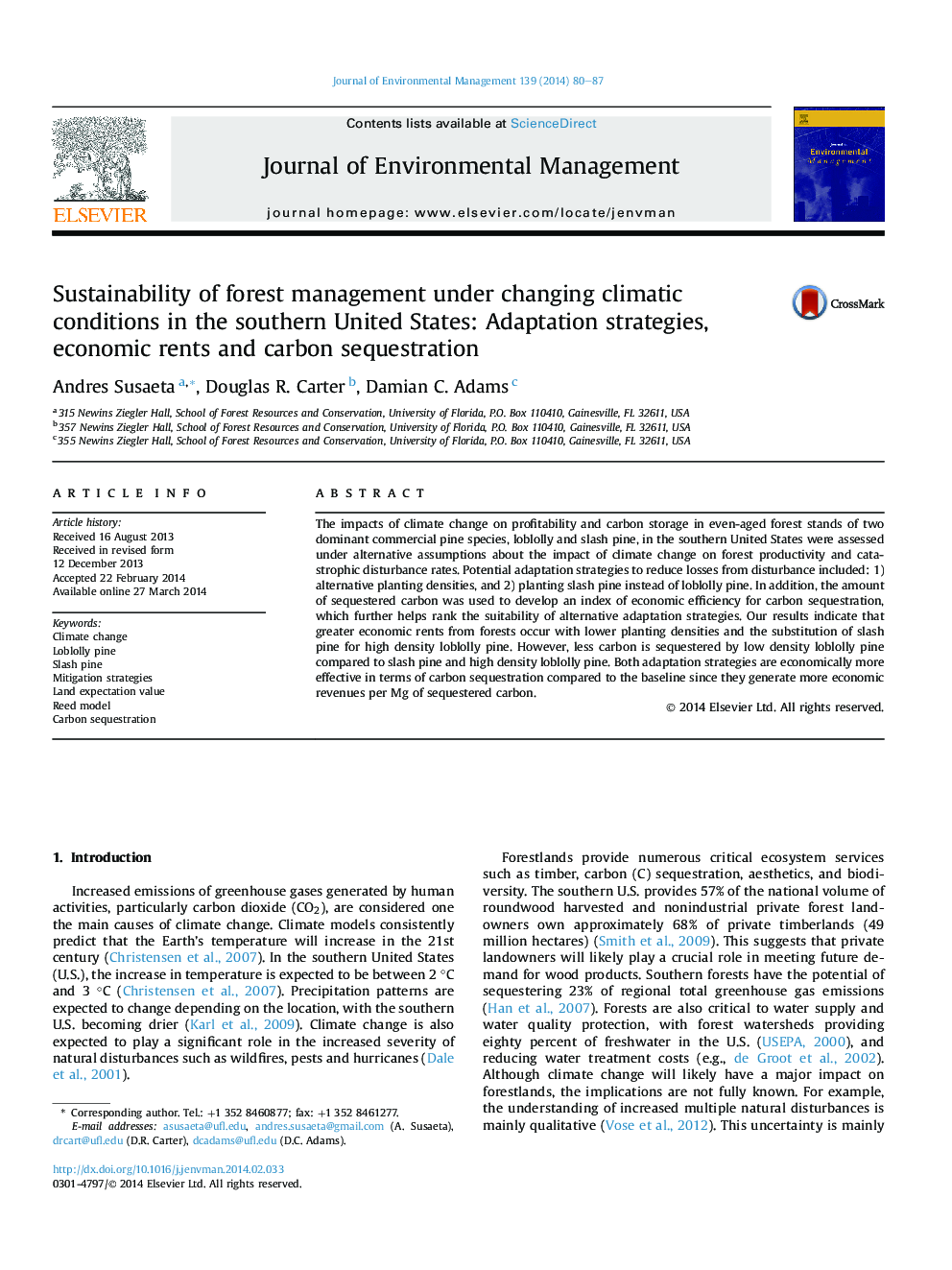| Article ID | Journal | Published Year | Pages | File Type |
|---|---|---|---|---|
| 7483871 | Journal of Environmental Management | 2014 | 8 Pages |
Abstract
The impacts of climate change on profitability and carbon storage in even-aged forest stands of two dominant commercial pine species, loblolly and slash pine, in the southern United States were assessed under alternative assumptions about the impact of climate change on forest productivity and catastrophic disturbance rates. Potential adaptation strategies to reduce losses from disturbance included: 1) alternative planting densities, and 2) planting slash pine instead of loblolly pine. In addition, the amount of sequestered carbon was used to develop an index of economic efficiency for carbon sequestration, which further helps rank the suitability of alternative adaptation strategies. Our results indicate that greater economic rents from forests occur with lower planting densities and the substitution of slash pine for high density loblolly pine. However, less carbon is sequestered by low density loblolly pine compared to slash pine and high density loblolly pine. Both adaptation strategies are economically more effective in terms of carbon sequestration compared to the baseline since they generate more economic revenues per Mg of sequestered carbon.
Keywords
Related Topics
Physical Sciences and Engineering
Energy
Renewable Energy, Sustainability and the Environment
Authors
Andres Susaeta, Douglas R. Carter, Damian C. Adams,
